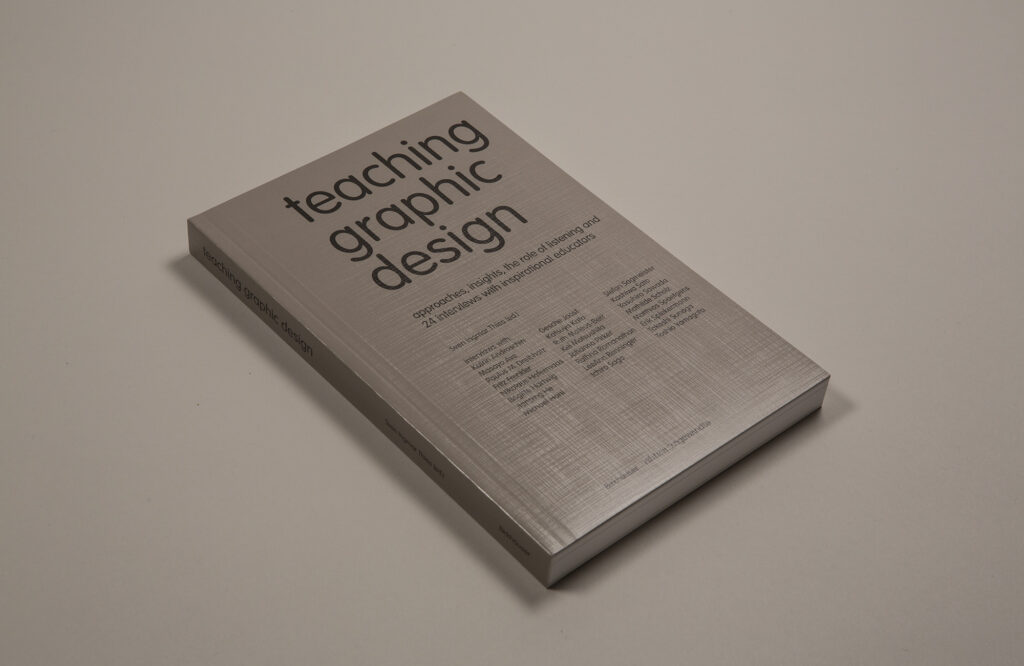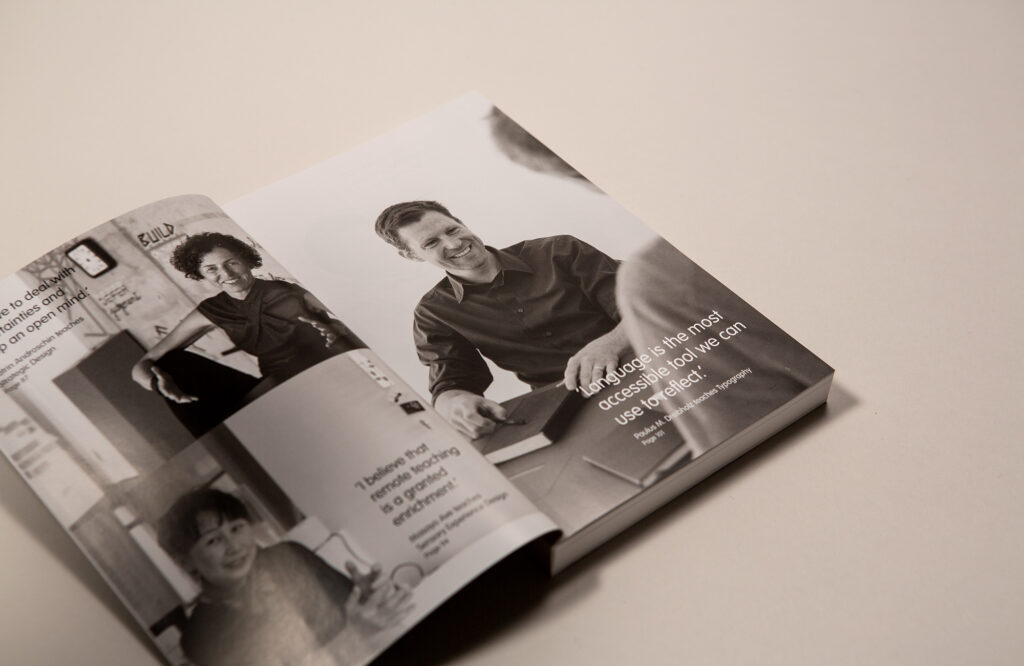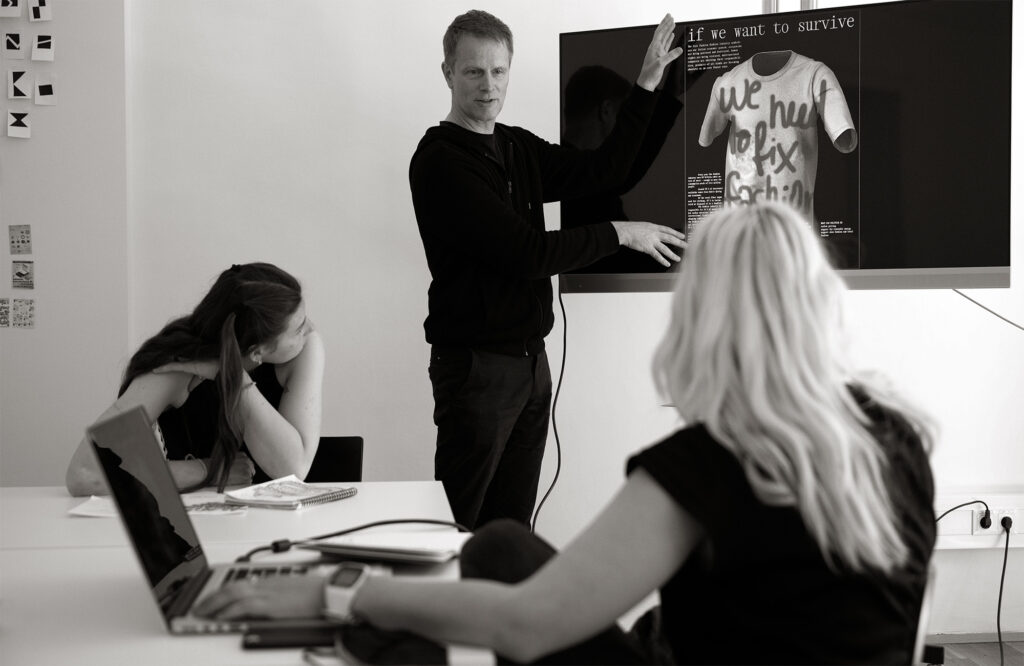
Teaching graphic design
Approaches, insights, the role of listening and 24 interviews with inspirational educators
Sven Ingmar Thies (ed.)
Teaching graphic design: is there a perfect teaching method? How do other people do it? And how do people from other cultures do it?
Sven Ingmar Thies asked those questions, wrote down his own experiences and interviewed 24 educators from Austria, China, Germany, Japan, the UK and the USA. Besides graphic designers, he spoke to specialists from various other areas such as cognitive psychology, game design, design theory and industrial design.
» Contents
» References
» Press
Sven Ingmar Thies
Friedrich-Schmidt-Platz 4/1
1080 Vienna
Austria
VAT number: ATU66023055
Telephone: +43-1-48 66 66 8
Email: contact@teachinggraphicdesign.com
Website concept and design: Thies Design, Mylène Martz
Website programming: Bernhard Poppe
Cookies
Your visit to this website is currently collected by Matomo Analytics. Tracking of visitors to this website is done by Matomo with a cookie in real time and in anonymous form. Personal data isn’t being collected.
You may choose to prevent this website from aggregating and analyzing the actions you take here. Doing so will protect your privacy, but will also prevent the owner from learning from your actions and creating a better experience for you and other users.

Approaches, insights, the role of listening and 24 interviews with inspirational educators
Sven Ingmar Thies (ed.)


All interview partners offer inspiring insights into their method of teaching – into the way they act and communicate with others. While some things differ culturally, others do have a lot in common.
Their answers also provide further ideas for everyday graphic design practice which entails communicating with, asking and listening to people as well as making carefully considered decisions.

Born and raised in Hamburg, Germany, Sven Ingmar Thies studied graphic design at Braunschweig University of Art and completed his final thesis in Tokyo and Yokohama.
Since his time at university, he has focused on a holistic design approach that seamlessly connects to other design disciplines, other specialist areas, or even to handicrafts. This conviction was intensified further by two professional engagements at Henrion, Ludlow & Schmidt in London, where brands were holistically developed, and at Kitayama Institute in Tokyo, where he learned about the interplay between architecture and design during a two-year postgraduate scholarship.
Besides being involved in project-related work for brand agencies Enterprise IG (today, Superunion) and Landor (today, Landor & Fitch), he founded Thies Design in 1998 which develops tailored brand experiences for enterprises and institutions.
In addition to his professional activities, Sven Ingmar Thies has taught graphic design at the University of Applied Arts Vienna’s Class of Ideas since 2011.

All notes, references and recommended reading mentioned in the book are listed below. (Please note that we are not responsible for the content of any linked website.)
All of the above links were accessed on 7 March 2023.

If you wish to order a press release, press images, a review copy or for any further request, please contact us:
» press@teachinggraphicdesign.com
Title:
Teaching Graphic Design
Approaches, Insights, the Role of Listening and 24 Interviews with Inspirational Educators
Editor:
Sven Ingmar Thies (concept, author, interviews)
Interviewees:
Katrin Androschin, Masayo Ave, Paulus M. Dreibholz, Fritz Frenkler, Nikolaus Hafermaas, Brigitte Hartwig, Jianping He, Michael Hohl, Gesche Joost, Katsuya Kato, Ruth Mateus-Berr, Kei Matsushita, Johanna Pirker, Rathna Ramanathan, LeeAnn Renninger, Ichiro Saga, Stefan Sagmeister, Kashiwa Sato, Yasuhiro Sawada, Mathilde Scholz, Matthias Spaetgens, Erik Spiekermann, Takeshi Sunaga, Toshio Yamagata
Copyright year:
2023
Publisher:
Birkhäuser, Basel
Volume in the series Edition Angewandte (University of Applied Arts Vienna)
Pages:
288
Language:
English
Format:
150 × 228
Price:
€ 42,-
Paperback:
ISBN: 978-3-0356-2600-1
» order at birkhauser.com
Electronic:
ISBN: 978-3-0356-2602-5
» order at birkhauser.com